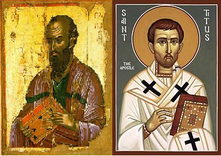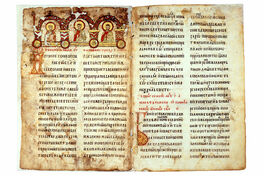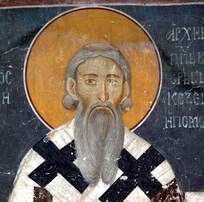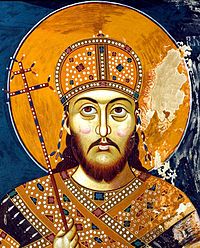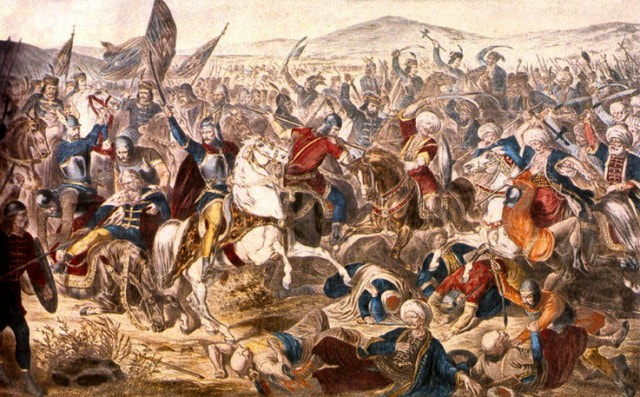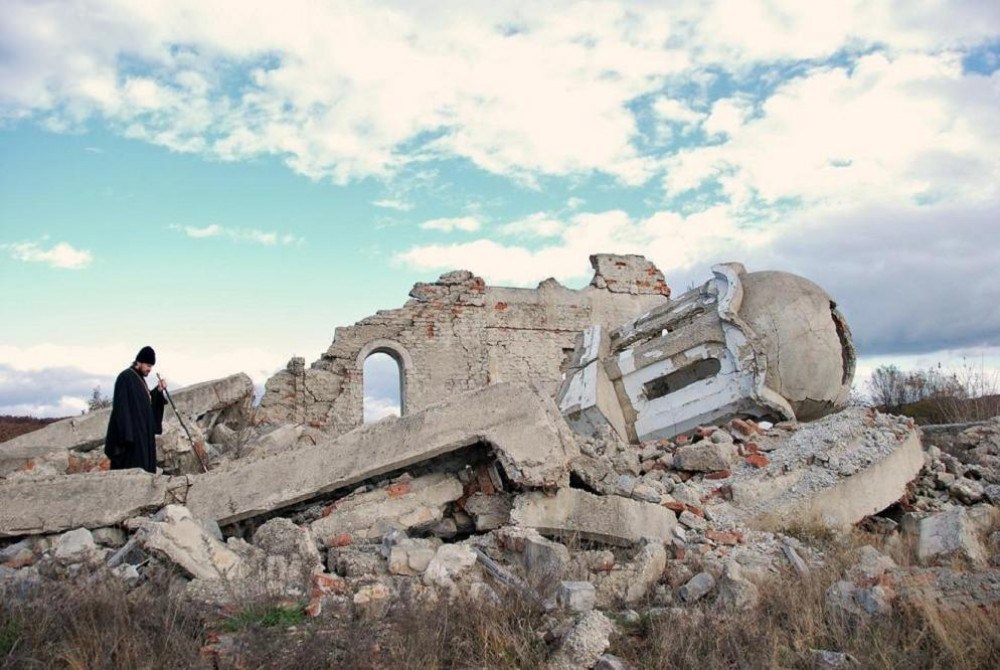About
History
|
The first traces of Christianity in the western Balkans, where Serbian people have lived for centuries, date from the period of Paul the Apostle and his disciple Titus during their journey to Rome in first century A.D. when apostle Paul and his disciple Titus visited Roman provinces of Duklja and Dalmatia.
Before the Serbian Church achieved autocephalous status and before mass conversion to Christianity (in 6th century), Serbians belonged to the Archbishopric of Ohrid of the united Christian Church. The oldest preserved text written in the Old Church Slavonic with Serbian national dialect is the Codex Marianus written in the beginning of 11th century. This scripture is kept at the Holy Mountain (Mount Athos, Greece). The oldest Serbian Cyrillic script is the Miroslav's Gospel from the 12th century, which is kept at the National Museum in Belgrade. Saint Sava, the first Archbishop of Serbia, received autocephaly for Serbian Church in 1219 from the Byzantine emperor in Constantinople. The seat of the archbishopric was in Žiča Monastery near present day Kraljevo, Serbia. During the reign of Emperor Dusan, in 1346, the Serbian Church achieved the status of an autocephalous Eastern Orthodox Patriarchate. The seat of Patriarchate was in Peć, Serbia. The Serbian rulers of the time built many churches and monasteries among which are Hilandar Monastery, Žiča Monastery, Gračanica Monastery, Studenica Monastery, Patriarchate of Peć and hundreds of other churches and monasteries where the spiritual, cultural and linguistic spirit of the Serbian people developed. Among the rulers, King Milutin (11th – 12th century) stands out as the one who built over 40 churches and monasteries. After the Battle of Kosovo in 1389, Serbian people entered a five-century long enslavement by the Ottomans. During this period the Patriarchate of Peć was abolished and renewed twice. First time in 1459 (restored in 1557), and the second time in 1776. The Ottomans left a legacy of ruined ancient sanctuaries, impoverished Serbian population and forced conversions to Islam. During the five hundred years of slavery, the bastions of Serbian spirituality survived in Cetinje (present day Montenegro) and Sremski Karlovci (Serbia) until the liberation of Serbian lands and the renewal of the Serbian Orthodox Church which took place in 1920. In the 20th century, the pogrom of the Serbian people continued in both World War I and World War II. In World War I alone more than a million Serbs lost their lives. The latest persecution of the Serbian people and Serbian sanctuaries happened in 1999 when, with the help of NATO, hundreds of thousands of Serbian people were expelled from their homes in Kosovo. During this time thousands of churches and monasteries were burned and destroyed. In the year 2019, Serbians celebrated 800 years of autocephaly of Serbian Orthodox Church. Through the rich and turbulent past to present day, church continues to be a beacon of hope for the future. |
Serbians in Salt Lake City Today
 Sophia Lovrich Piedmont
Sophia Lovrich Piedmont
In the beginning of the twentieth century, many Serbians migrated to the USA looking for a better life. They left behind their impoverished and war-torn homeland and sometimes their immediate families to find jobs that would help them sustain their loved ones with them and back home in Serbia. That is how they found themselves in the State of Utah. Most of them were blue collar workers, performing manual labor, mining and construction jobs. Early in the twentieth century, in the town of Midvale, they established a parish dedicated to St. Archangel Michael. Unfortunately, after many years, the parish was dissolved due to lack of membership. Besides a few records that are dearly safeguarded and an old parish graveyard, there are not many written records from that time.
Many years later after a new wave of religious, political and economic immigrants from former Yugoslavia moved to Salt Lake City, St Archangel Michael Serbian Orthodox Church was re-established in 1997. In 2006, after almost ten years of struggles, the parish purchased a building with the intention of providing a place for church services, cultural and other communal activities. One of the settlers from early twentieth century, Sofia Piedmont Lovrich, a great lady and a true Christian soul, found out about the parish. With great joy at the age of 98, speaking perfect Serbian even though she had never visited the land of her ancestors, started attending church services. In 2010, before this great soul departed this life, in her last will, she included the parish as a recipient of a generous contribution. This helped the parish pay off the mortgage on the church building and start a new chapter in its life. Today, there are approximately 100 Serbian families living in Utah.
Many years later after a new wave of religious, political and economic immigrants from former Yugoslavia moved to Salt Lake City, St Archangel Michael Serbian Orthodox Church was re-established in 1997. In 2006, after almost ten years of struggles, the parish purchased a building with the intention of providing a place for church services, cultural and other communal activities. One of the settlers from early twentieth century, Sofia Piedmont Lovrich, a great lady and a true Christian soul, found out about the parish. With great joy at the age of 98, speaking perfect Serbian even though she had never visited the land of her ancestors, started attending church services. In 2010, before this great soul departed this life, in her last will, she included the parish as a recipient of a generous contribution. This helped the parish pay off the mortgage on the church building and start a new chapter in its life. Today, there are approximately 100 Serbian families living in Utah.

